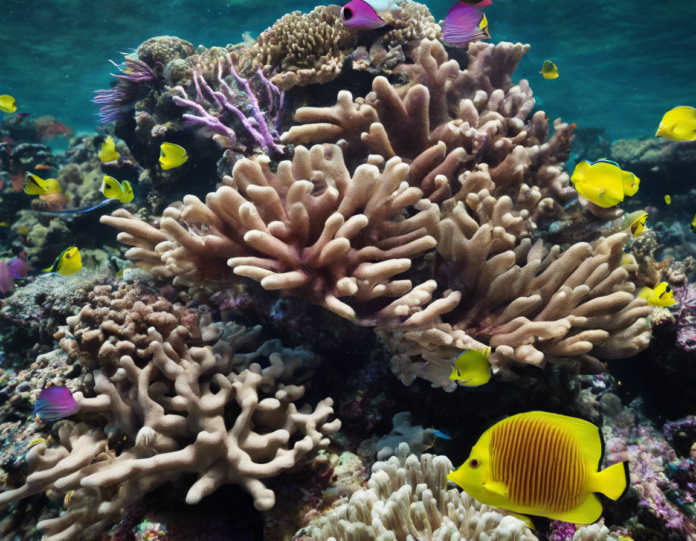The issue of reef disposal poses a significant challenge to marine ecosystems worldwide. As reefs face threats from climate change, pollution, overfishing, and habitat destruction, it is vital to explore strategies for the responsible removal and recycling of derelict or damaged reefs. By adopting best practices in reef disposal, we can ensure the health and longevity of these critical marine habitats. In this comprehensive guide, we will delve into the importance of reef disposal, methods for removal and recycling, benefits and challenges, and best practices for stakeholders involved in reef conservation efforts.
Importance of Reef Disposal
Healthy coral reefs play a crucial role in supporting marine biodiversity, providing food and livelihoods for millions of people, and protecting coastlines from erosion. However, as reefs face increasing pressures from human activities, many are at risk of degradation or destruction. When reefs become damaged beyond repair or need to be removed due to human impact, it is essential to follow proper disposal procedures to minimize further harm to the environment.
Improper reef disposal methods, such as dumping reef materials in landfills or oceans, can have devastating consequences. Not only can this harm delicate marine ecosystems, but it can also contribute to pollution and habitat destruction. By implementing responsible reef disposal practices, we can mitigate these risks and ensure that reef materials are handled in an environmentally sustainable manner.
Methods for Removal and Recycling
1. Manual Removal
Manual removal involves physically dismantling and extracting damaged or derelict reef structures. This method is labor-intensive but allows for precise control over the removal process. It is often used for small-scale reef projects or when machinery cannot access the site.
2. Mechanical Dredging
Mechanical dredging involves using specialized equipment, such as excavators or dredgers, to remove reef materials from the seabed. This method is suitable for larger-scale reef removal projects and can be more efficient than manual removal.
3. Artificial Reef Recycling
Instead of disposing of removed reef materials, they can be recycled and repurposed to create new artificial reefs or construction materials. This sustainable approach helps reduce waste and can provide additional habitat for marine life.
Benefits and Challenges of Reef Disposal
Benefits:
- Environmental Protection: Proper reef disposal helps protect marine ecosystems and prevent further damage to coral reefs.
- Resource Conservation: Recycling reef materials conserves valuable resources and reduces the need for new construction materials.
- Habitat Restoration: Repurposed reef materials can provide new habitats for marine organisms and potentially restore degraded reef areas.
Challenges:
- Complexity: Reef disposal can be a complex process that requires coordination between stakeholders and adherence to environmental regulations.
- Cost: Depending on the removal method and scale of the project, reef disposal can be costly, requiring financial resources for equipment and labor.
- Logistics: Transportation and logistics can pose challenges when removing reef materials from remote or underwater locations.
Best Practices for Reef Disposal
1. Prioritize Recycling
Whenever possible, prioritize recycling and repurposing reef materials to minimize waste and maximize environmental benefits. Work with local partners and organizations to explore recycling options for removed reef structures.
2. Follow Environmental Regulations
Ensure compliance with local and international environmental regulations when planning and executing reef disposal projects. Obtain permits and approvals as necessary to prevent any legal issues and ensure responsible disposal practices.
3. Engage Stakeholders
Engage with local communities, government agencies, and conservation organizations throughout the reef disposal process. Collaboration and communication are essential for successful reef conservation efforts and sustainable disposal practices.
4. Monitor and Evaluate
After removing and recycling reef materials, monitor the impact of the disposal activities on the surrounding environment. Evaluate the effectiveness of the disposal methods used and adjust future strategies based on lessons learned.
5. Educate and Raise Awareness
Educate stakeholders and the general public about the importance of responsible reef disposal and the benefits of recycling reef materials. Raise awareness about the threats facing coral reefs and the critical role of proper disposal practices in reef conservation.
Frequently Asked Questions (FAQs)
1. What are the environmental impacts of improper reef disposal?
Improper reef disposal can lead to habitat destruction, marine pollution, and harm to marine species that rely on coral reefs for shelter and food.
2. How can recycled reef materials benefit marine ecosystems?
Recycled reef materials can provide new habitats for marine organisms, contribute to biodiversity, and support ecosystem health and resilience.
3. Who is responsible for overseeing reef disposal projects?
Reef disposal projects may be overseen by government agencies, conservation organizations, research institutions, or private companies, depending on the location and scale of the project.
4. What are some innovative recycling methods for repurposing reef materials?
Innovative recycling methods for repurposing reef materials include using them to create artificial reefs, enhancing coastal protection structures, or even incorporating them into sustainable construction projects.
5. How can individuals contribute to responsible reef disposal practices?
Individuals can support responsible reef disposal practices by participating in clean-up efforts, reducing their carbon footprint to protect coral reefs, and advocating for sustainable reef conservation initiatives.
In conclusion, reef disposal is a critical aspect of reef conservation efforts that requires careful planning, coordination, and adherence to best practices. By prioritizing recycling, following environmental regulations, engaging stakeholders, monitoring impact, and raising awareness, we can ensure that reef materials are handled responsibly and sustainably. Through collective action and commitment to reef conservation, we can protect and preserve these vital marine ecosystems for future generations.





